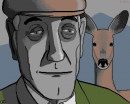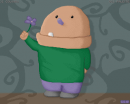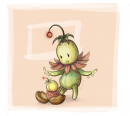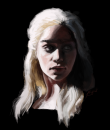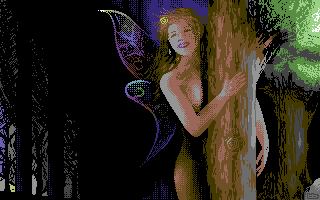Latest Comments
Facet - Desire (Comment by: Ramonb5^DSR 2013-01-24)
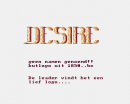 If I remember correct this one was done by ThD and not Zoef (aka Facet).
If I remember correct this one was done by ThD and not Zoef (aka Facet).STE86 - Tiger's eye (Comment by: STE'86 2013-01-24)
 This image was done just after obtaining a Koalapad in order to test out the pad in a "freehand" style in conjunction with the "Blazing Paddles" software and it's then unique random "airbrush" tool.
This image was done just after obtaining a Koalapad in order to test out the pad in a "freehand" style in conjunction with the "Blazing Paddles" software and it's then unique random "airbrush" tool.Hence the "spray can" look with very little fine detail and dither.
I do have a feeling that this may well have been used on a "way of the tiger" demo because i do remember doing an oriental sprite font at the same time.
Offwhite - Portrait Practice 2 (Comment by: Grip 2013-01-22)
Grip - Meanwhile in the Highlands (Comment by: Grip 2013-01-22)
Akira - Rebellion of the Humanoid Kangaroos (Comment by: moroz1999 2013-01-21)
Electric - Pantherpants (Comment by: mog 2013-01-20)
Grip - Meanwhile in the Highlands (Comment by: mog 2013-01-20)
Smilodon - Here Comes The Smilodon (Comment by: CONS 2013-01-19)
Smilodon - Here Comes The Smilodon (Comment by: Smilodon 2013-01-19)
Offwhite - Teatime Rabbit (Comment by: mog 2013-01-17)
Loaderror - 2012-10-19-00 (Comment by: mog 2013-01-17)
Offwhite - Selvportrett (Comment by: mog 2013-01-17)
Offwhite - Portrait Practice 4 (Comment by: Frogg 2013-01-17)
Offwhite - Mocking Jay (Comment by: Grip 2013-01-16)
 My $0.02:
My $0.02:The photos posted above are indeed references. The picture is not an exact copy of an already existing work, but some images have been used to understand lights/shadows, anatomy and so on.
A classically trained painter will, as a part of the education, study human anatomy to better grasp how poses, shadows and so on affect the human body. And yet, many of them use photo references for commissioned portraits. Perhaps mostly because noone would have the patience to model for a rennaisance-style painting nowadays.
It might be harder to use a real-life setup to a painting than it is to use a photo, because a photo is completely static and is already delimited by the camera. But it is still a skill or technique that can be learned.
The real artistic skill in the case of realistic painting - mainly portraits - lies in conveying something MORE than the original reference, regardless of if it is a still life, a photo or a model. I think you prove you can do that in this image.
If the work is not intended to be a realistic-looking depiction - that is, stylized in any way - it can be a caricature, or a cartoon, or something more playful along the lines of an illustration, then copying is so much more obvious and thus easier to identify.
A lot of the great old pixeled images are all about technique. There's no doubt a lot of hard work and time has been spent on transferring an already existing piece of art to a downscaled, 32-colour version. A work of superior forgery, almost. This also gives birth to an understanding of proportions, shadows etc. but there is no feeling of originality. Unfortunately, this old-school way of "converting" existing works to pixeled media, thus copying it, has created a paranoia on the scene regarding the originality of a work.
The human mind is fantastic, but nobody can paint a portrait from memory alone. The coder might resort to a language reference or a book on mathematics, the musician samples real-life instruments and the graphician uses a reference. It's as simple as that.
Offwhite - Portrait Practice 4 (Comment by: Grip 2013-01-16)

